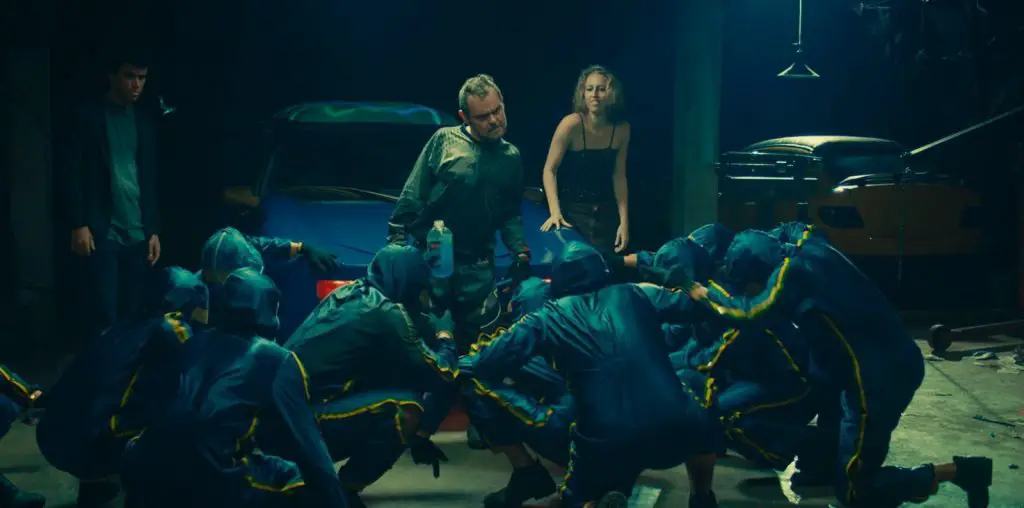
The title character in Goyette’s short film “The Lazy Assassin” is a striking contrast to the popularized image of the hit man. Instead of being fashionable, furtive, and obsessively clean and neat, the lazy assassin (Craig Mitchell) is comfortably dressed, ridiculously fearless, and ill-groomed. When he makes his first appearance, he is just finishing up a job. Sitting on a bed and pointing a handgun at a partially clothed young man (Miguel Coleman), the assassin calmly orders the man to shift from side to side. The assassin then kills him by expending the least amount of energy possible and takes a nap. As the rest of the ten minute-long film reveals, the hit man kills by waiting; appropriately, Goyette makes us wait with him.
The assassin takes his time, prefers not to put what he perceives as substantial effort into executing a task, and reaches a destination by taking the shortest route between two points. For example, the assassin does not walk to the mailbox; he hops in a car to check the mail. When watching this sequence, it isn’t so much the fact that he drives to the mailbox that is bizarre, rather it is the ritual he performs while doing it. He drives down the short driveway, turns left, reverses, aligns his window with the mailbox and retrieves the mail, drives forward, backs up past the mailbox, drives onto the driveway, and then parks in the carport. This mail-checking antic suggests that in addition to being lazy, the assassin is a bit nuts.
The remainder of the film involves the assassin’s “last chance” assignment, which entails killing some guy (Igor Jadrovski) in a nice suit who works in a business park. The assassin walks inside one of the buildings, notices that the elevators are temporarily out of service, eyes the staircase, and returns to his car. Stairs are not an option for the lazy assassin. This portion of the film further demonstrates that there is no air of glamour or pompous cool about him. Defying the standard apparel of mainstream cinema assassins, the hit man wears a big, black t-shirt, grey sweatpants, and transports his guns in a plastic bag. His sunglasses are about the extent of traditional assassin gear and he couldn’t care less. He has one thing on his mind, but he won’t do more work than is necessary to do the job. When the hit man’s day comes to an end, Goyette rewards him with a big payoff for all his patience.
The pacing and editing of the film mirror the assassin’s methods and behavior. When he eats, gets the mail, or sits in a chair, the camera rarely cuts and tends to linger in the moment until the he has finished his activity. The audio also complements the fact that neither the director nor the assassin is in a hurry. There is little to no dialogue, and aside from the sounds that originate within the story world (footsteps, car engines, mastication), only the bass guitar and piano of the musical score is heard throughout the film. Although “The Lazy Assassin” spoofs the assassin ideal, the film doesn’t explode with comedy. The humor expresses itself in the form of irony and when the short concludes, it’s clear that Goyette’s film couldn’t have ended funnier.
